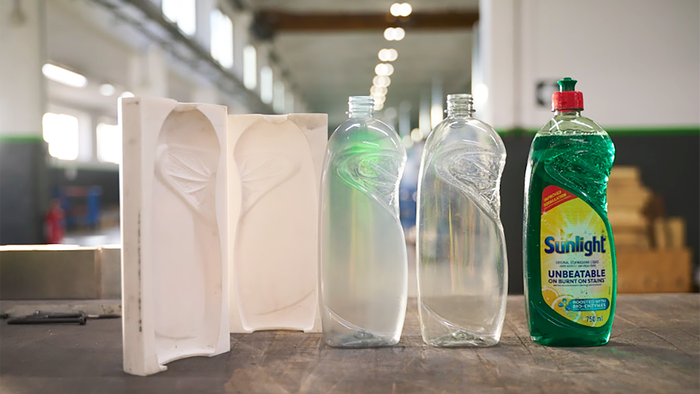Summer Road Trip: Sustainable Paperboard Coatings
As sustainable coating innovations shift into high gear, a bit of knowledge will help you steer clear of confusion over terminology.
July 1, 2024

At a Glance
- Bio-derived coatings free of chemicals that can migrate into food or the environment are rising in importance.
- Binders and pigments create thinner coating layers and are heat-sealed at lower temperatures than extrusion emulsions.
- Learn the key characteristics and specifications that differentiate mono-materials and plastic-free materials.
Recent visits to APP mills and coatings operations and some coating implementation work in Indonesia were enlightening.
While paperboard coatings have a long track record, the sector is now on the road to providing coatings with more sustainable sourcing and facilitating more sustainable disposal of paperboard. Bio-derived recyclable/repulpable and/or compostable/biodegradable coatings that are free from chemicals that can migrate into food, or the environment are part of the new focus.
Paperboard coatings include fossil-fuel-based coatings like styrene acrylates, synthetic latex, PE, PP, and PET, as well as bio-derived polymers and starch, clay, cellulosic, and lignin-based coatings. Application-specific Cobb water absorbency, wet rigidity, seam integrity, water vapor, oxygen barrier, and water adsorption are measured to define coating suitability. Coated virgin and recycled paperboards must conform with 21CFR 176.170, 176.80, and 176.260 for direct food contact.

Paper roll prior to coating. Image: Claire Sand
Coating dispersions are shifting into high gear.
Coating dispersion is one of the key areas of innovation in paperboard coatings. Binders and pigments dispersed in an aqueous matrix are used to create thinner coating layers. Aqueous dispersions have the advantage of being heat-sealed at lower temperatures than extrusion emulsions.
Companies including Asian Pulp and Paper, Huhtamaki, and StoroEnso are using aqueous dispersion to keep non-cellulosic content below 5%. These aqueous dispersion components are essentially pH-balanced oil-in-water emulsions with specific aspect ratios, and they include materials such as kaolin clay, platy clay, calcium carbonate — and binders or pigments such as styrene-acrylate, butadiene, ethylene acrylic acid, polyvinyl acetate, or polyesters. Nanoscale components with aqueous dispersion can have set aspect ratios to achieve certain characteristics. Patents such as 20200232164A1 demonstrate how commercial clays and binders can be used to create unique coatings. A value chain innovation is underway, with second-stage dispersions applied just before food contact.

Extrusion lamination coating operations. Image: Claire Sand
Grinding gears over terminology?
It’s important to understand two key terms, mono-material and plastic-free, which are often used to denote coated paperboard that is neither of these. Let’s explore the relevance of these terms and their use.
Mono-material: This designation relates to recyclability. Recyclability of paperboard is critical to reducing landfilled paperboard. Paperboard is the No. 1 material in US landfills. In the EU, for paperboard to be considered a recyclable mono-material it must have less than 5% non-cellulose. With some exceptions, if a US paperboard has less than 2% non-cellulose contact, it is considered a recyclable mono-material, although testing is required.
Even though the percentage of non-cellulosic is so relevant to the mono-material designation, the percentage of non-cellulosic material detected by different test procedures varies, Harmonization of test methods is lacking but underway. The Confederation of European Paper Industries (CEPI) has a harmonized EU test method (EN 13430), the Fiber Box Association (FBA), and American Forest and Paper Association (AFPA) have a joint voluntary standard. Additionally, a working group of the Technical Association of the Pulp and Paper Industry (TAPPI) is preparing a test method for 2024[SB2] . Extended Producer Responsibility and soon-to-be-updated FTC labeling guidelines will change regulations and help more pragmatically define mono-materials and recyclability in the US. Importantly, proper pre-treatment can enable the recycling of paperboard with PE and PET coatings.
Plastic-Free: This designation relates to the desire to prevent microplastics from entering the environment or migrating into food. Since most coatings are inherently polymeric, true plastic-free certifications are problematic. Importantly, the plastic–free designation applies to numerous fossil- and bio-derived polymers. To be viable in diverse markets, non-cellulosic and plastic-free claims must be low and tested. As with mono-material and recyclability, test methods vary, and specification of the test method is needed in communications. For example, Foopak Bio Natura is Flustix-certified as plastic–free and below 0.75% plastic. This meets plastic–free criteria, EN13430 recycling, and EN13432 compostability as well as stricter EU member state requirements for non-cellulosic levels below 5%.
The road continues. Coatings innovations will remain in high gear as sourcing and disposal requirements for coated paperboard continue evolving.
About the Author(s)
You May Also Like




